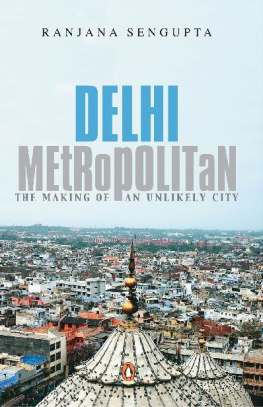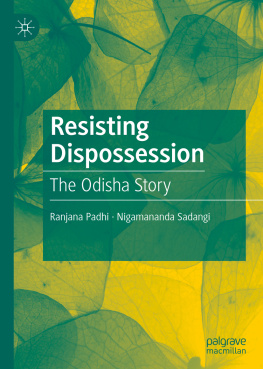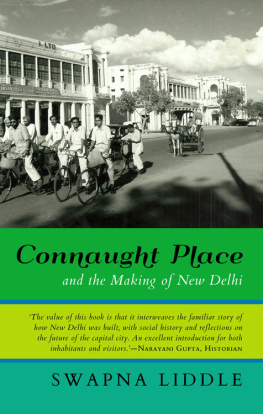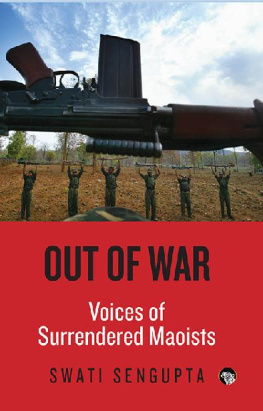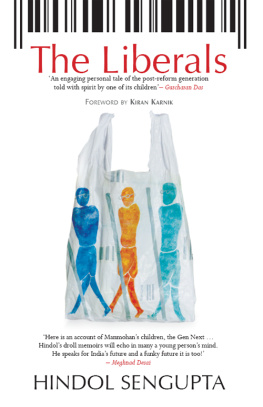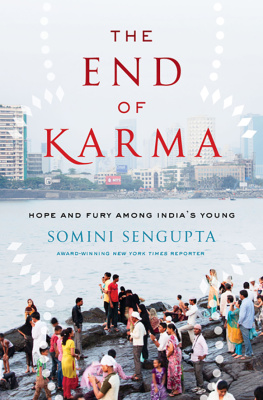PENGUIN BOOKS
DELHI METROPOLITAN
Ranjana Sengupta has studied in London, Kolkata and New Delhi. A journalist for over two decades, she has worked in several major Indian newspapers and magazines including the Hindustan Times , the Indian Express and Sunday . She has contributed to City Improbable (Penguin Books) and Delhi, Agra & Jaipur (Eyewitness Guides). Her publications include Ajanta and Ellora (The Guidebook Company). She writes extensively on literature, travel and trends in urban life. She has lived for many years in Kuwait, Bhutan, London and Pakistan, but always comes back to Delhi.
DELHI METROPOLITAN
The Making of An Unlikely City
RANJANA SENGUPTA
PENGUIN BOOKS
To the memory of my parents,
Deepali and Nirmal Chandra Sen Gupta
CONTENTS
ACKNOWLEDGEMENTS

THIS BOOK HAS BEEN MORE THAN SIX YEARS IN THE making; I have worked on it, not always continuously, but always with the help of a number of people who have offered their time, knowledge, memories and advice generously and willingly. They are not responsible for its flaws, but without them this book would not exist. I would like to thank Ayesha Kagal, Ajeet Caur, Aparna Sharma, Prof. Anzar, A.G. Krishna Menon, Anuradha Roy, Bhagwant Singh, C.S. Gupte, Jayati Ghosh, J.K. Chandra, Shri Jutera, the late Jag Pravesh Chandra, Khushwant Singh, Kumkum Lal, Kamini Mahadevan, Karan Singh, Lola Chatterjee, Manish Sahai, Mohini Menon, Mandira Sen, Mahendra Vyas, Narayani Gupta, Nandini Mehta, Prita Maitra, Pandit Lila Ram, Ravi Singh, the late Sheila Dhar, Sharda Malik, Sudha Malik, Santosh Auluck, Sultana Qureishi, Sunil Shandilaya, Shehzade Bahadur, Sheema Mookherjee, Sagarika Ghose, Shaila Sathe, the Sarai centre for giving a me grant to study urban villages and Zameer Ahmad. My debt to my husband, TCA Raghavan, and to my daughters, Pallavi and Antara, is immeasurable; but for their unflagging faith and encouragement, this book would not have been written.
PROLOGUE
THIS IS NOT A HISTORY OF DELHI; IT IS NOT AN exposition of its political structures or its economy. It is, rather, the spaces between these grand interstices where their effects are registered.
Nor is it about all of Delhis people; I have written about the Delhi I know, that I have access to, thatif you likeI have a sense of. And my understanding of this ferocious, restless, relentless metropolis is that each of us who lives in this city carries a unique, if virtual, Delhi inside our heads: the life we have in it, the parts we are familiar with, and the parts we do not know, but nonetheless have a notion of, however inexact. This book, then, is about my Delhi, where I have lived for the greater part of my adult life, which I love, if not wholly comprehend.
Ranjana Sengupta
New Delhi 2007
IN THE EYE OF THE BEHOLDER

WHAT MAKES FOR OWNERSHIP OF A CITY? WHAT IS it, exactly, that imbues a citys streets, stones and buildings with the resonance of belonging? What does a place have to have to bring forth identity, loyalty or pride? The notion of native place has such a primal location in the Indian consciousness that professing loyalty to another territory brings with it a baggage of disloyalty to language, culture and identity. Delhis lack of a single, overarching regional identity is often held to be responsible for its inhabitants failure to pass the loyalty test. Cited, equally often, is Delhis identity as a city of migrants; and then New Delhi is still considered too new; apparently a mere sixty years is insufficient to make a city a home. Yet, paradoxically, even those who complain loudest of Delhis many and undeniable ills will rarely consider living elsewhere in India. Most Dilliwalas settle in Delhi citing professional, educational or housing reasons, explanations invariably expressed in the terminology of convenience, opportunities or finances; it is rarely ever, affection for an environment, a way of life or even peoplethe vocabulary invoked when talking of home. Thus you have a situation where most middle-class inhabitants of Delhi are prepared to live and eventually die in this city, even while waxing eloquent about the lush greenness of Kerala, the sedate charms of Chennai on a Sunday afternoon, or the pleasures of adda on a Sunday in Kolkatas Bhowanipore.
Yet Delhi, as an idea as well as a space, has not stood still in the decades since Independence. From its stolid imperial beginnings to the extravagant multiple universes that make up the city today, Delhi has experienced a rapidity of change unmatched by any other Indian metropolis. Its economic base has expanded and diversified, from a handful of textile mills and a very small service sector at Independence to an ever-expanding financial and services sector as well as numerous small-scale industries and large industrial units. Its population, which stood at just under a million in 1947, is today close to 14 million. It has a regional diversity unique in India and this diversity has led to the evolution of multiple universes within the city. Within these worlds are varying degrees of urbanization, differing world views and primordial loyalties, which coexist more or less amicably, sometimes intersecting, sometimes wholly parallel.
It is one of Delhis many discreetif unappreciated charms that a single street will manifest a hundred varied and wonderful landscapes. Take Aurobindo Marg, for instance, one of Delhis main arteries; thousands of people traverse it each day but are probably unaware of the richness of the sites they are crossing. Once called Qutub Road (after the slave king), it begins at Safdarjangs Tomb. Safdarjang was the prime minister of Ahmed Shah, and his son, the Nawab of Awadh, Shuja-ud-Daula, constructed the tomb in 1754. Shuja-ud-Daula combined filial piety with frugality, and pared down expenses (a habit common among Delhis contractors even today) by using marble stripped from the tomb of Mughal Emperor Akbars general, Abdul Rahim Khan-i-Khanan in Nizamuddin. The road runs through Delhis infinity of cultures: the affluent gentility of Jorbagh gives way to the shabby but smug faade of the government colony of Kidwainagar and then passes the ethnic market of Dilli Haat, opposite which is the crowded but rapidly going toney INA Market. This market is not named after the Indian National Army of Netaji Subhas Bose fame, INA standing for Indian National Airportas Safdarjung Airport is just opposite. Aurobindo Marg then goes, via a spaghetti junction of flyovers, to the All India Institute of Medical Sciences (AIIMS) crossing, the area beneath the flyovers prettily landscaped, then to AIIMS itself, with its unique-to-India mix of cutting-edge medical research and overflowing-to-the-pavement outpatients department. After the crossing, south Delhi proper begins. Then Aurobindo Marg goes past the well-manicured frontages of Green Park and Haus Khas Enclave, crossing the cramped shops of Yusuf Sarai, haunt of all wishing for freshly ground coffee from Madras Stores, to the considerably more opulent Aurobindo Place market, opposite which is the original thirteenth-century wall of the former village of Kharera, now enclosing the offices of a private company. The road then passes the always crowded IIT Gate crossing to the remains of the twelfth-century citadel of Prithviraj Chauhan (1168-1192), Delhis last Rajput king, who was defeated in 1192 by Muhammad Ghori, an Afghan. Ghori marked his victory by building the Qutb Minar where Aurobindo Marg ends. A thousand years of history, government dwellings, swank colonies, inexpensive shops, high-end retail emporia, regional outletsit is all there, Delhis amazing, eclectic mix.









